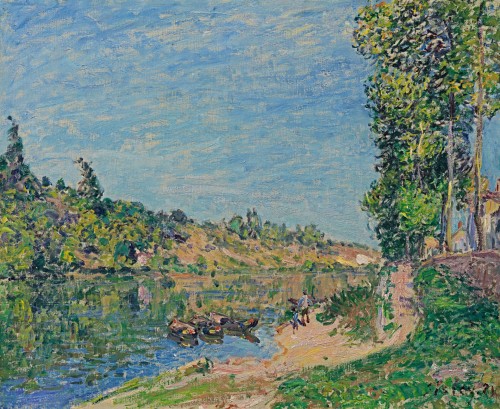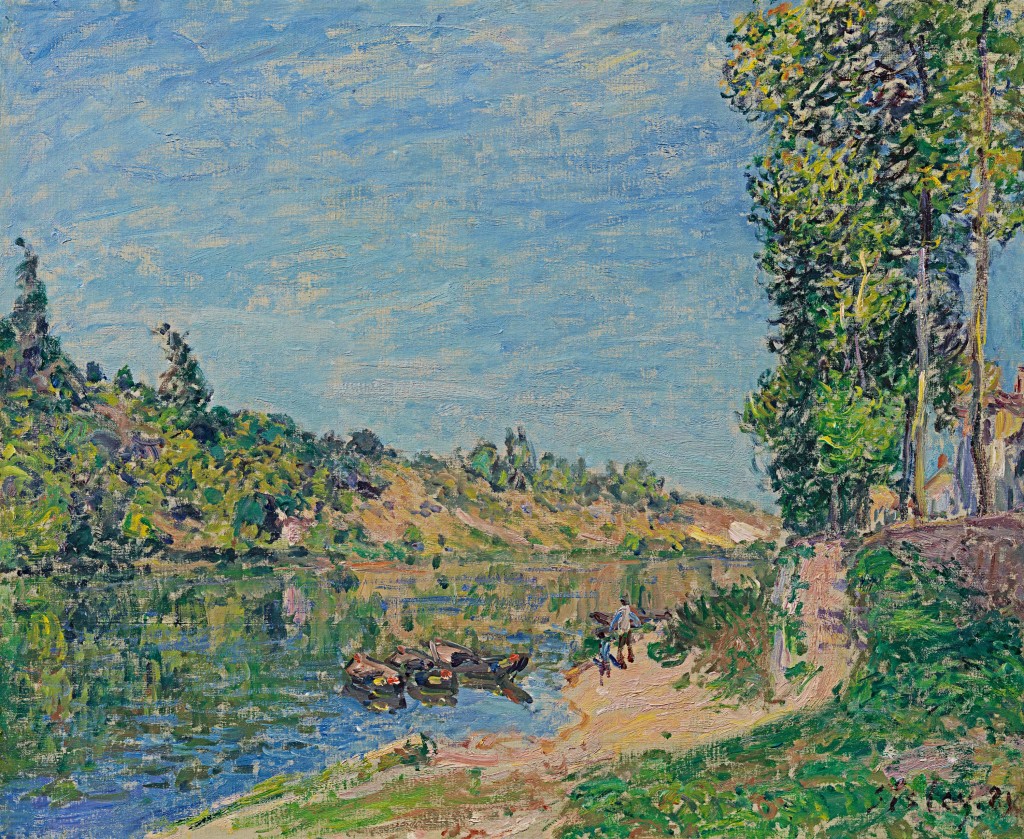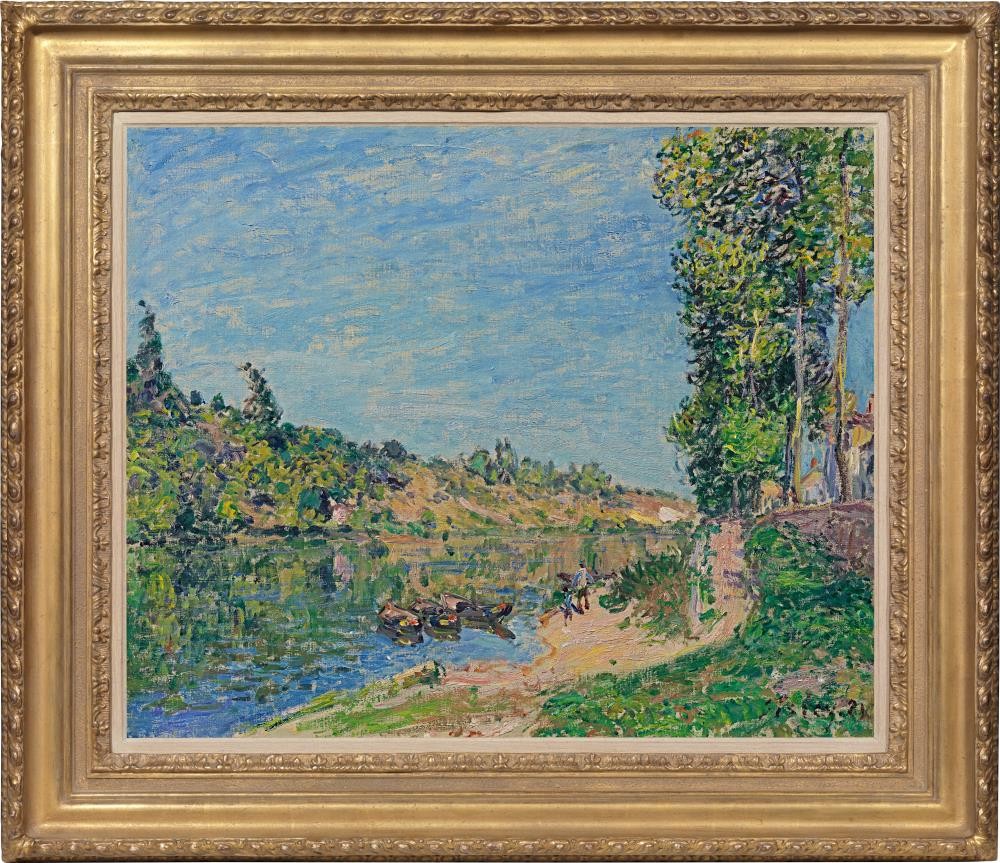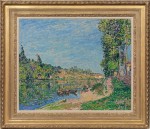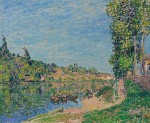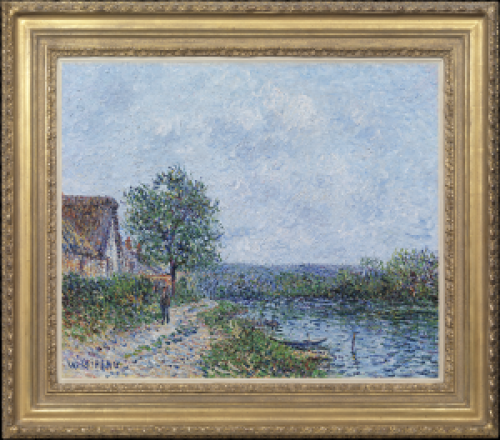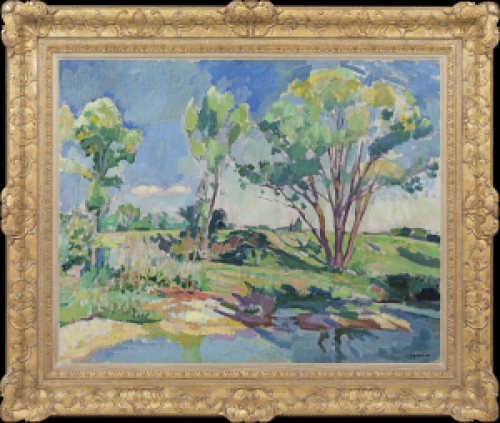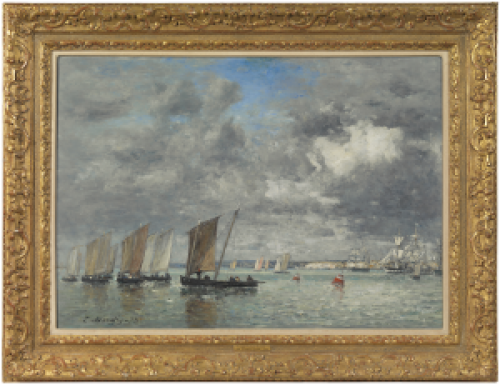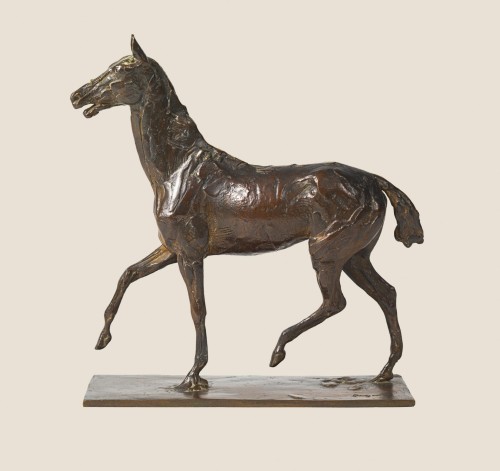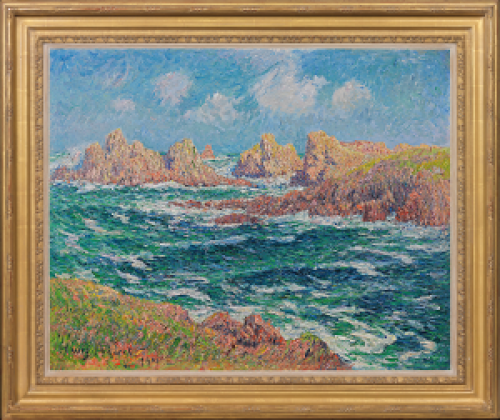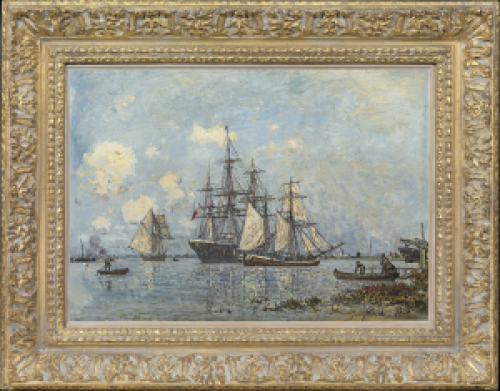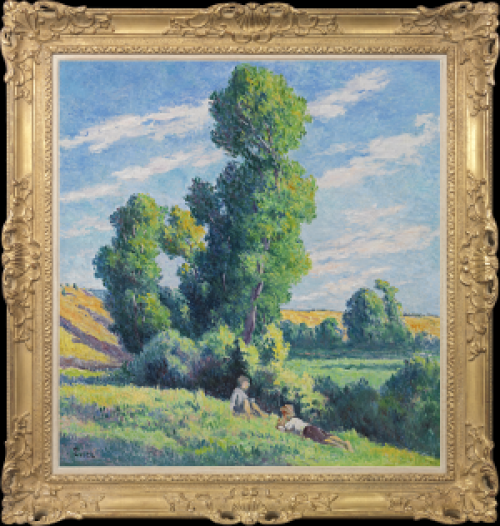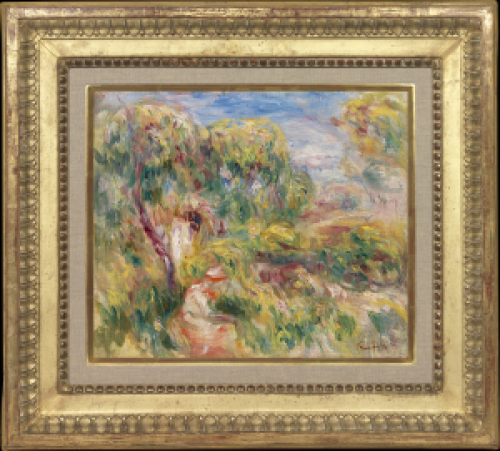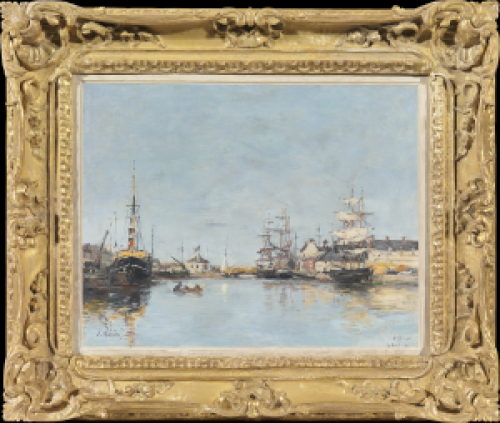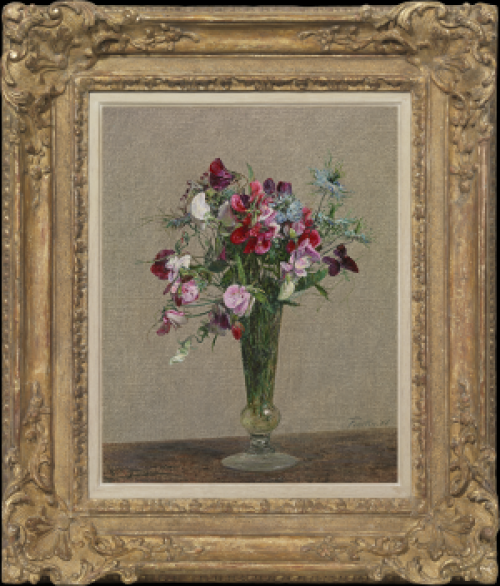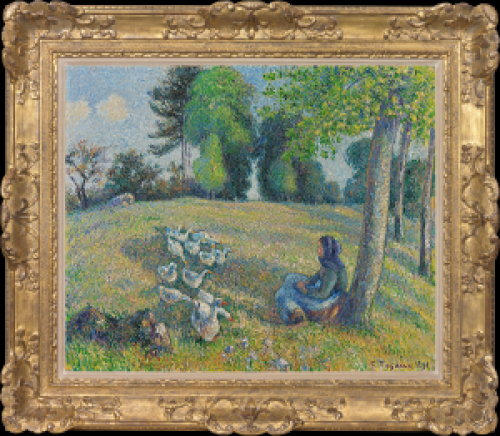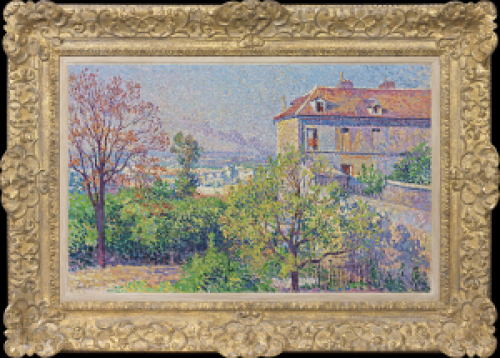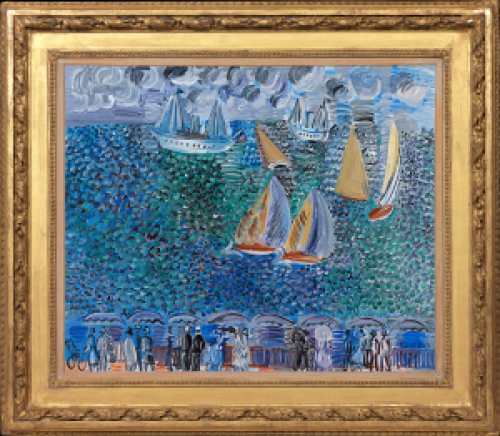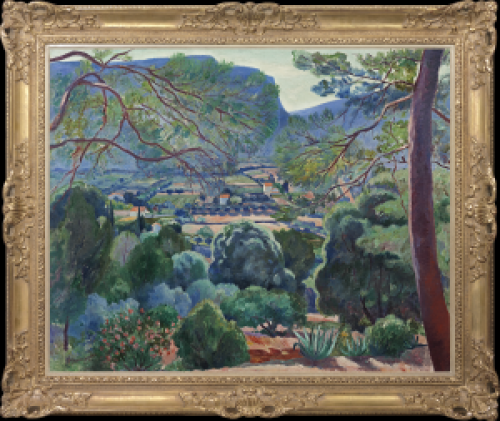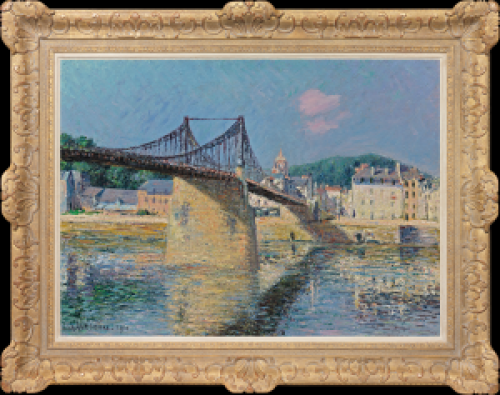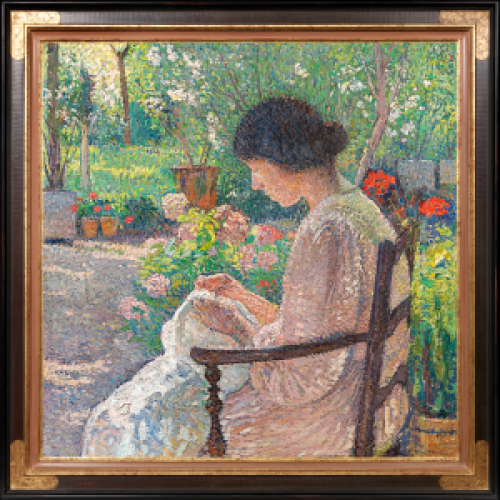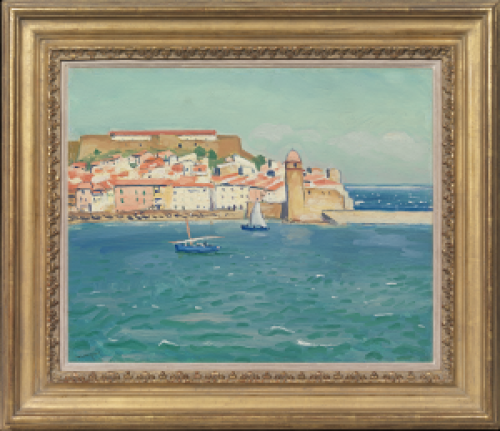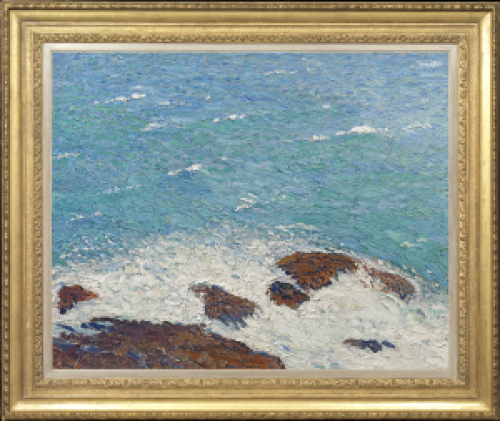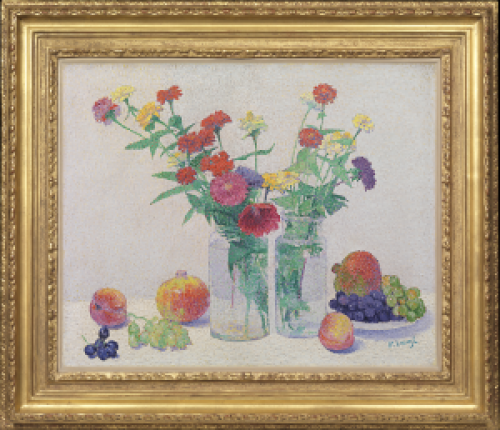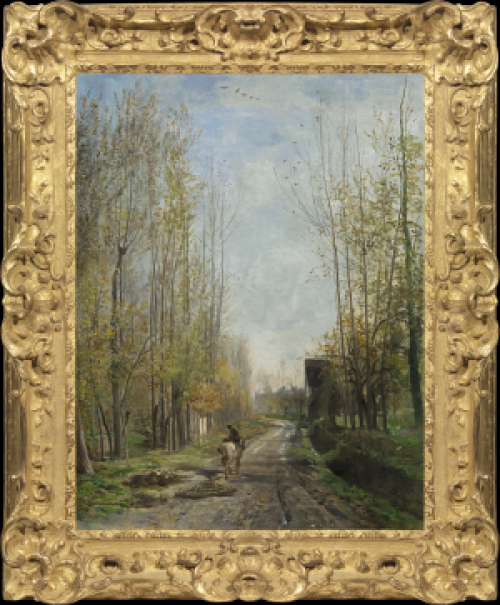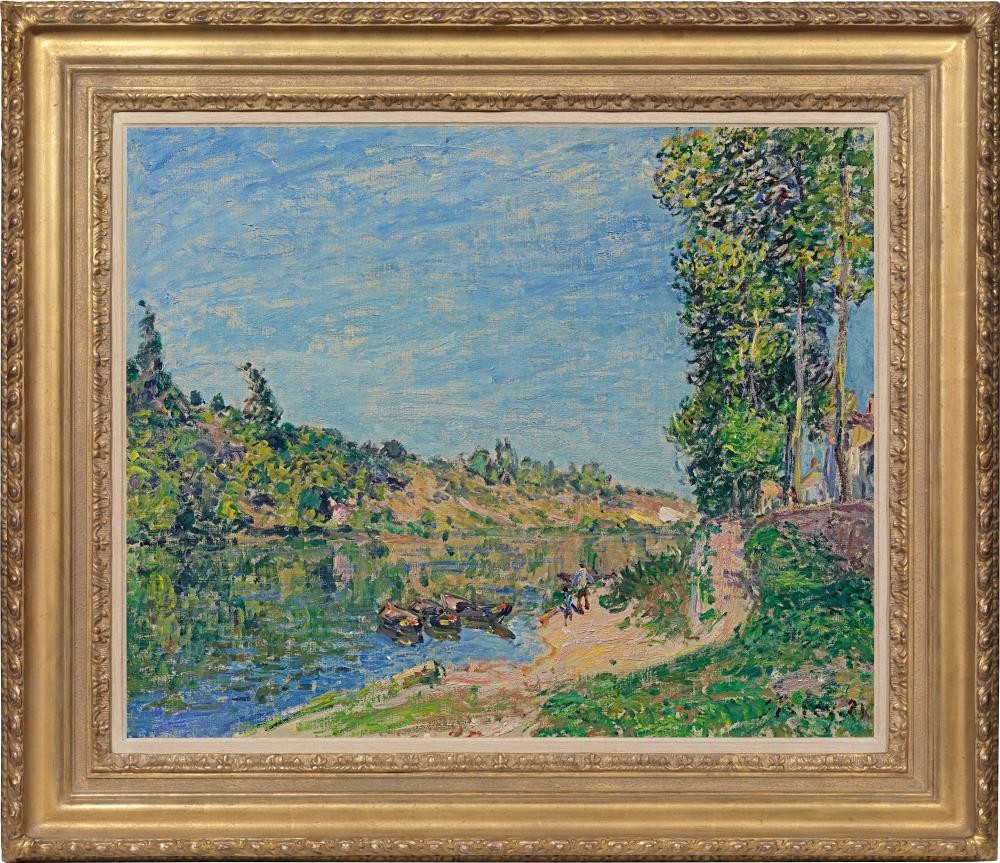ALFRED SISLEY
Paris 1839 - 1899 Moret-sur-Loing
Ref: CC 133
Les coteaux de La Celle, après Saint-Mammès
Signed and dated lower right: Sisley. 84
Oil on canvas: 21 1/8 x 25 5/8 in / 53.7 x 65.1 cm
Frame size: 29 x 33 in / 73.7 x 83.8 cm
Provenance:
Maurice Allard du Chollet, Paris Bollag Galleries, Zurich; M Knœdler & Company, New York, acquired from the above in August 1923; The Hon. Sir Evan Edward Charteris (1864-1940), London, acquired from the above on 30th April 1928 Derek Jackson OBE, DFC, AFC, FRS (1906-1982), by July 1938; by descent in a private collection, Switzerland
Exhibited:
Paris, Galeries Georges Petit, Exposition d’œuvres de Alfred Sisley, May-June 1917, no.40 (as Les bateaux de La Celle après Saint-Mammès) New York, M Knœdler & Company, Exhibition of the Last Fifty Years in French Art, January 1927, no.21 (as The banks of the river) Columbus, OH, The Columbus Gallery of Fine Arts, Paintings Belonging to Mr Derek Jackson of Lausanne, Switzerland, 1957, p.13, illus. Lausanne, Fondation de l’Hermitage, L’Impressionnisme dans les Collections Romandes, June-October 1984, no.100, illus. in colour
Literature:
F Daulte, Alfred Sisley, Catalogue Raisonné de l’Oeuvre Peint, Lausanne 1959, no.558, illus.
F Daulte, Sisley, Les Saisons, Paris 1992, p.61, no.34, illus. in colour S Brame et F Lorenceau, Alfred Sisley, Catalogue Critique des Peintures et des Pastels, Lausanne et Paris 2021, pp.226, 469, no.570, illus. in colour
In the 1880s Alfred Sisley lived in Moret-sur-Loing and its adjacent villages, Les Sablons and Veneux-Nadon, near the edge of the Fontainebleau forest. The area ‘is an essentially Impressionist place with the gentle light of the Ile de France, the soft colours and the constantly changing skies of northern France. There are green woods and pastures, curving tree-lined banks of rivers, canals and narrow streams, wide stretches of river…old stone houses, churches and bridges’[1].
Like his friend Monet, Sisley liked to explore a familiar landscape in every season and mood. In 1884-5 he made a sustained campaign of paintings at Saint-Mammès, a short walk from Moret at the confluence of the Seine and the Loing. La Celle is a smaller settlement on the right bank of the Seine about a mile upstream from Saint-Mammès.
This view is taken from the Saint-Mammès side of the river near the seventeenth century Château La Croix-Blanche; a few houses along the quayside can be seen through the trees on the right. A steep, sandy path leads down to the water. Across the tranquil Seine, the land slopes up towards La Celle. The canvas is dominated by the pulsing, blue sky, composed from vibrant dragged and swirled brushstrokes. Like John Constable (1776-1837), who declared the sky to be the ‘chief organ of sentiment’, Sisley declared that the sky determined the whole mood of a work and that ‘I always begin by painting the sky’[2]. He commented: ‘The sky is not simply a background: its planes give depth (for the sky has planes as well as solid ground), and the shapes of clouds give movement to a picture. What is more beautiful indeed than the summer sky, with its wispy clouds idly floating across the blue? What movement and grace!’
Sisley varies his technique across the canvas, using dense, staccato strokes for the shimmering trees at right, blended sandy-pink for the smooth path and rapidly-dashed, loose brushwork for the foreground. The effect is to create the panorama of light and changing impressions experienced when observing nature. He wrote: ‘Although the landscape painter must always be the master of his brush and his subject, the manner of painting must be capable of expressing the emotions of the artist. The sunlight in softening the outlines of one part of a scene will exalt others and these effects of light which seem nearly material in a landscape ought to be interpreted in a material way on canvas’.
Three small boats in the middle foreground and a man and child walking along the river attest to human presence in the scene, but they are given no prominence, let alone a narrative. As Richard Shone has commented, Sisley paints ‘a countryside often beautiful in the varied aspects of its cycle, but also humdrum…Although Sisley is invariably selective, his is not the discrimination of a poetic idealist. Each view is chosen for its aesthetic realities’[3]. The glory of light and colour are what give this painting its serene joy.
A pencil sketch of this composition, probably made as a ricordo, is in an album of sketches in the Musée d’Orsay, Paris. A similar oil on canvas view, but in more subdued light, Les coteaux de La Celle vus de La Croix-Blanche, après-midi de Septembre, is in the Musée d’Art Moderne et Contemporain, Strasbourg[4].
Alfred Sisley, Les coteaux de La Celle, St Mammès, toile de 15 /7.
Pencil on paper, from a sketchbook inscribed Croquis /Novembe 1883 / Sisley.
Musée d’Orsay, Paris, inv. no.RF 11596, 34. Photo: RMN/Michel Urtado.
Note on the provenance
This painting was in two distinguished English collections in the 1920s and 30s. In 1928 it was acquired by The Hon. Sir Evan Edward Charteris (1864-1940), son of the 10th Earl of Wemyss. A successful lawyer, Charteris was Chairman of the Trustees of the National Portrait Gallery and a Trustee of the National Gallery and the Wallace Collection, London.
By July 1938 the painting was owned by Derek Jackson (1906-1982), the son of Sir Charles Jackson, MP, a property and newspaper tycoon who owned the News of the World. Derek Jackson was an intriguing mixture of intellectual, aesthete and athlete. A brilliant physicist in the field of atomic spectroscopy, he studied with Professor Frederick Lindemann and worked at the Clarendon Laboratory in Oxford. One of the ‘Bright Young People’ of the 20s, he was a friend of the Mitford sisters and later married one of them, Pamela. He was a passionate rider to hounds and steeplechase rider, competing several times in the Grand National.
Jackson made important contributions to Britain’s air defences in World War II and flew over a thousand miles as a navigator, mostly in combat in night-fighters with No.604 (County of Middlesex) Squadron. He was awarded the DFC, AFC and OBE and appointed a Fellow of the Royal Society in 1947. After the War, Jackson lived as a tax exile in Ireland, France and Switzerland, latterly in Lausanne. Among his roster of six wives was Poppet, daughter of Augustus John; Princess Ratibor and the femme fatale Barbara Skelton. His lovers included Francis Bacon.
ALFRED SISLEY
Paris 1839 – 1899 Moret sur Loing
Alfred Sisley was born in Paris in 1839 into a prosperous English merchant family. He went to London at the age of eighteen to study commerce with a view to entering the family business, but soon decided to devote himself entirely to painting. Upon his return to Paris in 1863, assured of family support, Sisley entered the studio of Marc Gleyre where he met and became lifelong friends with Claude Monet and Pierre-Auguste Renoir. Sisley’s first recorded landscape dates from 1865, yet his financially comfortable circumstances may account for the fact that there are only eighteen known paintings by him pre-dating 1871.
Sisley’s lifestyle changed abruptly in 1870, the year of the Franco-Prussian War, with the death of his father and the financial ruination of his family. He was then compelled to turn to painting as a means of supporting himself. From this time on his correspondence to friends and patrons is often dominated by pleas for financial aid.
Sisley was the only Impressionist to paint landscapes almost exclusively; his chief interest was in trying to represent the mood and atmosphere of nature. Water always played an important part in his work, a subject matter which gives his paintings a joyous vibrancy and purity of tone. He lived near rivers most of his life, at Bougival, Louveciennes and Marly-le-Roi. In 1880 Sisley moved from Sèvres in the Ile de France to Veneux-Nadon near Fontainebleau and later to nearby Moret-sur-Loing, where he was based until his death in 1899.
Sisley exhibited at the Salon des Refusés in 1863, the Salon in 1866, and contributed to four major Impressionist exhibitions, from the first in 1874 until 1886. Despite a successful one-man show staged by his dealer Durand-Ruel in 1883, Sisley’s paintings found comparatively few buyers during his lifetime beyond a circle of loyal collectors. In 1897, at a large retrospective exhibition at the Galeries Georges Petit, not one painting was sold. Since 1899 Sisley’s subtle and delicate landscapes have entered major private and museum collections throughout the world and he has taken his place at the heart of the Impressionist movement.
[1] V Couldrey, Alfred Sisley: The English Impressionist, Exeter 1992, p.68.
[2] Quoted in Hartford, Bruce Museum/Aix-en-Provence, Hôtel de Caumont, Alfred Sisley: Master Impressionist, 2017, exh. cat. by MaryAnne Stevens et. al., p.152.
[3] Sisley, London 1992, repr.2004, p.144.
[4] S Brame et F Lorenceau, Alfred Sisley, Catalogue Critique des Peintures et des Pastels, Lausanne et Paris 2021, pp.225, 469, no.567, illus. in colour

